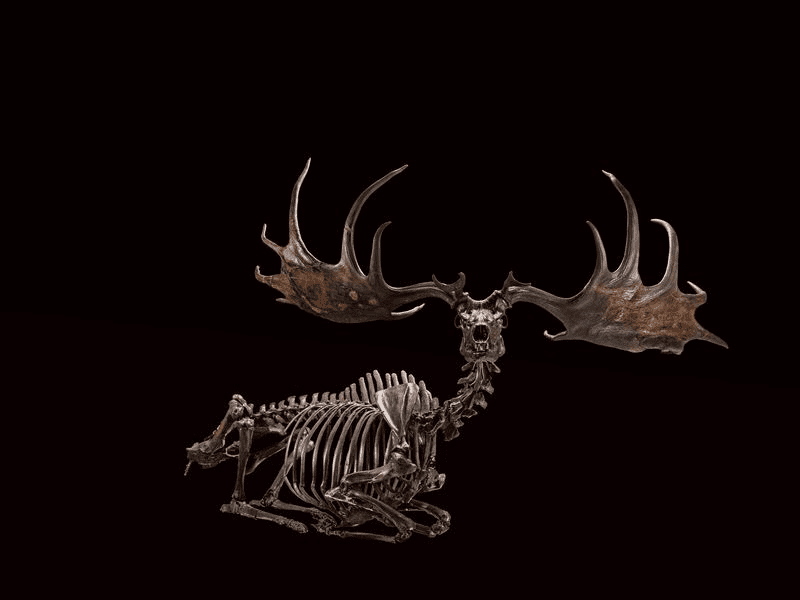The Story Of The Irish Elk
Archaeologists discovered a painting of an Irish elk on the wall in Lascaux cave, southwestern France. It is known to be accurate because they were well-known animals back then. Also, their antlers could grow up to 12 feet across with 90 pounds each year! If you aren’t aware, that’s significantly bigger than the elk you would see in North America.

The Irish elk is a double misnomer. While the animal lived well and even thrived in Ireland, the kind of elk was not exclusive to Ireland; this species was found across Europe to western Siberia for 400,000 years during the geologic period of the Pleistocene. The Irish Elk began to die off as a result of climate change, according to Lister’s mapping, pollen, and dating research.
During the Younger Dryas in Western Europe between 13000-12000 years ago, the decline really began. This was a time of rapid cooling. While the males would have faced great suffering, according to a 2008 study by C. O. Worman, the females may have been the deciding factor in the demise of the species.
For centuries, Irish farmers have been digging peat from bogs for fuel. But in the 1600s and early 1700s, they found something much more interesting—huge deer antlers! The kings of Europe prized these rare finds so highly that it’s said to be one reason Ireland was never colonized by Europeans like America or Australia.

The oldest mounted fossil skeleton in the Smithsonian is one of its most popular exhibits today. The Irish elk first displayed more than a century ago and standing tall as recently as 2019 before being posed to lie down for children’s viewing pleasure now has giant antlers within arm’s reach.
